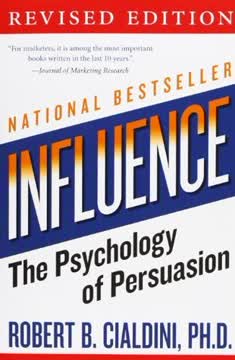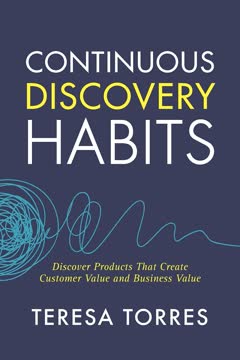Key Takeaways
1. Organizations as living systems: The organism metaphor
Organizations are mini-societies that have their own distinctive patterns of culture and subculture.
Biological parallels. Like organisms in nature, organizations are complex systems that depend on their environment for survival. They have needs, life cycles, and adapt to changing conditions. This metaphor encourages us to see organizations as interconnected, living entities rather than mechanical structures.
Holistic perspective. The organism metaphor emphasizes the importance of:
- Understanding the relationship between an organization and its environment
- Recognizing the interdependence of internal subsystems
- Focusing on organizational health, growth, and development
- Appreciating the diversity of organizational "species" adapted to different niches
By viewing organizations as living systems, managers can develop more flexible and adaptive approaches to design and leadership, better equipped to handle the complexities of modern business environments.
2. Adapting to environments: Contingency theory in action
There is no one best way of organizing. The appropriate form depends on the kind of task or environment with which one is dealing.
Situational approach. Contingency theory rejects the idea of universal management principles, arguing that effective organization depends on aligning internal characteristics with external environmental demands. This approach emphasizes flexibility and adaptive capacity.
Key aspects of contingency theory include:
- Matching organizational structure to environmental complexity and uncertainty
- Aligning leadership styles with task requirements and follower characteristics
- Designing information and control systems appropriate to the level of environmental turbulence
- Balancing differentiation and integration across organizational subunits
By embracing contingency thinking, organizations can develop more nuanced and effective strategies for dealing with diverse challenges and opportunities in their specific contexts.
3. Learning organizations: The brain metaphor
The idea of learning to learn has become a key priority in designing and managing organizations that can deal with the challenges of a turbulent world.
Cognitive capacity. The brain metaphor encourages us to view organizations as information-processing systems capable of learning, adaptation, and self-organization. This perspective emphasizes the importance of knowledge creation, distributed intelligence, and continuous improvement.
Key features of learning organizations include:
- Development of systems for gathering, processing, and distributing information
- Encouragement of experimentation and learning from both successes and failures
- Creation of organizational structures that facilitate knowledge sharing and collaboration
- Cultivation of a culture that values inquiry, reflection, and continuous learning
By adopting brain-like qualities, organizations can enhance their ability to innovate, adapt to change, and thrive in complex, uncertain environments.
4. Culture as a lens: Organizations as shared meanings
When understood in this way, culture can no longer just be viewed as a simple variable that societies or organizations possess or something that a leader brings to his or her organization.
Symbolic interpretation. The culture metaphor focuses on how organizations create and maintain systems of shared meaning. It emphasizes the role of values, beliefs, rituals, and symbols in shaping organizational behavior and identity.
Key aspects of organizational culture include:
- The power of shared assumptions and interpretations
- The role of organizational stories, myths, and heroes
- The impact of rituals and ceremonies in reinforcing cultural norms
- The influence of leadership in shaping and transmitting culture
By understanding organizations as cultures, managers can gain deeper insights into the underlying forces that shape behavior, motivation, and performance. This perspective also highlights the challenges and opportunities involved in managing cultural change and integration.
5. Power dynamics: Organizations as political systems
The idea that organizations are supposed to be rational enterprises in which their members seek common goals tends to discourage discussion of political motive.
Competing interests. The political metaphor reveals organizations as arenas where different individuals and groups compete for power and resources. This perspective highlights the role of conflict, negotiation, and coalition-building in organizational life.
Key aspects of organizational politics include:
- The sources and uses of power (e.g., formal authority, control of resources, expertise)
- The formation and dynamics of interest groups and coalitions
- The processes of decision-making and conflict resolution
- The impact of external stakeholders on internal power dynamics
By acknowledging the political nature of organizations, managers can develop more sophisticated strategies for navigating complex power relationships, resolving conflicts, and building support for organizational initiatives.
6. Unconscious influences: The psychic prison metaphor
The psychic prison metaphor alerts us to pathologies that may accompany our ways of thinking and encourages us to question the fundamental premises on which we enact everyday reality.
Hidden constraints. The psychic prison metaphor explores how unconscious processes, deeply held beliefs, and taken-for-granted assumptions can trap individuals and organizations in self-limiting patterns of thought and behavior.
Key aspects of the psychic prison perspective include:
- The role of unconscious anxieties and defense mechanisms in shaping organizational behavior
- The impact of early life experiences on leadership styles and organizational dynamics
- The power of archetypes and collective unconscious in influencing organizational culture
- The challenges of overcoming cognitive and emotional barriers to change
By recognizing these hidden influences, organizations can work to liberate themselves from constraining mindsets and develop more creative and adaptive approaches to problem-solving and innovation.
7. Integration of metaphors: A holistic view of organizations
Just as a tribal society's values, beliefs, and traditions may be embedded in kinship and other social structures, many aspects of an organization's culture are thus embedded in routine aspects of everyday practice.
Multifaceted perspective. Integrating multiple metaphors provides a more comprehensive and nuanced understanding of organizational life. Each metaphor offers unique insights and reveals different aspects of organizational reality.
Benefits of a multi-metaphor approach:
- Recognizes the complexity and paradoxical nature of organizations
- Encourages flexibility in thinking and problem-solving
- Helps managers avoid the limitations of single-perspective approaches
- Facilitates more creative and innovative organizational design and management
By embracing multiple metaphors, managers and organizational theorists can develop a richer, more holistic understanding of organizational dynamics and more effectively navigate the complexities of modern business environments.
Last updated:
FAQ
What's Images of Organization about?
- Exploration of Metaphors: Gareth Morgan's Images of Organization explores various metaphors to understand organizations, such as machines, organisms, brains, cultures, and political systems. Each metaphor offers a unique perspective on organizational dynamics.
- Focus on Change and Learning: The book emphasizes the importance of adaptability and learning in organizations, advocating for a shift from rigid structures to more flexible, organic models.
- Cultural and Contextual Influences: It discusses how culture and societal contexts shape organizational behavior, contrasting Western and Japanese organizational practices.
Why should I read Images of Organization?
- Comprehensive Framework: The book provides a robust framework for analyzing organizations through different metaphors, making it valuable for both students and practitioners.
- Practical Applications: Insights from the book can be applied to improve management practices, enhance learning, and foster adaptability in organizations.
- Timely Relevance: Its concepts remain relevant in the face of globalization and technological change, offering guidance for contemporary managers and leaders.
What are the key takeaways of Images of Organization?
- Metaphors Shape Understanding: Different metaphors lead to different theories of organization and management, each with its strengths and limitations.
- Importance of Adaptability: Organizations must learn and adapt to their environments, focusing on double-loop learning that challenges existing norms.
- Cultural Context Matters: The cultural context significantly influences organizational structure, behavior, and effectiveness.
What are the best quotes from Images of Organization and what do they mean?
- "Metaphors Create Ways of Seeing": This quote emphasizes that the metaphors we use shape our perceptions and actions within organizations, suggesting new insights can be gained by changing metaphors.
- "Organizations are open systems that need careful management": It highlights the necessity for organizations to be aware of their environments and adapt accordingly, underscoring flexibility and responsiveness.
- "Learning organizations must develop capacities that allow them to scan and anticipate change": This stresses the proactive nature of successful organizations, which must continuously monitor their environments and adjust strategies.
How does Gareth Morgan define a learning organization in Images of Organization?
- Continuous Learning and Adaptation: A learning organization actively seeks to learn from experiences and adapt to environmental changes, emphasizing double-loop learning.
- Empowerment and Autonomy: Such organizations empower members to take initiative and make decisions, fostering collaboration and innovation.
- Integration of Knowledge: They create systems that facilitate knowledge sharing across all levels, ensuring insights flow freely to support decision-making.
What is the significance of culture in Images of Organization?
- Culture Shapes Behavior: Culture is a fundamental aspect of organizational life, influencing interactions, decision-making, and role perceptions.
- Cultural Differences Matter: The book contrasts Western and Japanese management approaches, illustrating how cultural differences impact effectiveness and engagement.
- Creating a Cohesive Identity: A strong corporate culture unifies members around shared values and goals, enhancing commitment and performance.
How does Images of Organization address the concept of power within organizations?
- Organizations as Political Systems: The book discusses organizations as political entities where power dynamics play a crucial role in decision-making and resource allocation.
- Conflict and Cooperation: It highlights inherent conflicts from differing interests, suggesting management through negotiation and collaboration.
- Empowerment and Control: The text explores balancing empowerment and control, suggesting effective management requires navigating these tensions.
What is the machine metaphor in Images of Organization?
- Organizations as Machines: This metaphor views organizations as mechanistic entities with structured processes and hierarchies, emphasizing efficiency and control.
- Limitations: While useful for certain aspects, it can overlook human and social dimensions, potentially leading to rigid structures.
- Historical Context: Rooted in the Industrial Revolution, it highlights ongoing influences in contemporary management practices.
How does the organism metaphor differ from the machine metaphor in Images of Organization?
- Focus on Adaptability: The organism metaphor views organizations as living systems that evolve in response to their environments, contrasting with the rigid machine metaphor.
- Interconnectedness: It highlights the importance of relationships and interactions within the organization and with its environment.
- Management Implications: Suggests fostering a culture of learning and adaptability rather than strict control, promoting collaboration and innovation.
What is the brain metaphor in Images of Organization?
- Cognitive Processes: The brain metaphor likens organizations to cognitive systems that process information, learn, and adapt.
- Emergent Intelligence: It suggests organizations can exhibit emergent intelligence, where collective knowledge leads to innovative solutions.
- Practical Applications: Managers can enhance learning and adaptability by encouraging collaboration, knowledge sharing, and continuous improvement.
What are the implications of the domination metaphor for management in Images of Organization?
- Power Dynamics: Highlights power dynamics within organizations, emphasizing awareness of these dynamics to create equitable environments.
- Ethical Considerations: Encourages consideration of ethical implications in decisions, advocating for socially responsible management.
- Organizational Change: Informs strategies for change, addressing issues of inequality and exploitation, focusing on inclusive practices.
How can managers use metaphorical thinking in practice according to Images of Organization?
- Broaden Perspectives: Metaphorical thinking helps explore different organizational dimensions, leading to comprehensive insights.
- Integrate Insights: Drawing on multiple metaphors allows managers to develop effective strategies for complex challenges.
- Foster a Learning Culture: Encouraging metaphorical thinking promotes a culture of learning and exploration, empowering employees to contribute to growth.
Review Summary
Images of Organization receives mostly positive reviews, with readers praising its insightful metaphors for understanding organizations. Many find it thought-provoking and valuable for analyzing business structures. Some criticize its idealistic approach and lack of empirical evidence. Readers appreciate the book's creative perspectives but note it can be dense and academic. It's considered essential reading for those interested in organizational theory, though some find it challenging as an introductory text. Overall, reviewers commend its ability to provide new lenses for examining organizational behavior and management.
Similar Books








Download PDF
Download EPUB
.epub digital book format is ideal for reading ebooks on phones, tablets, and e-readers.




